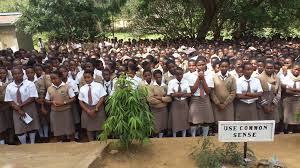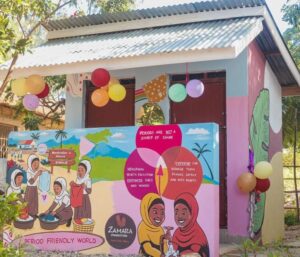Enduring Legacy of Bura Girls High School

Bura Girls National School. (Photo/ Courtesy)
By Andrew Mwangura
Email, thecoastnewspaper@gmail.com
At the heart of Ng’ambwa area of Mwatate Constituency, Taita Taveta County, stands an institution whose story mirrors the educational transformation of Kenya itself.
Bura Girls High School, a Catholic-sponsored national school, represents more than a century of commitment to girls’ education, embodying a journey from humble colonial-era beginnings to its current status as a Cluster One National School.
The institution’s motto, “Co-operation brings success,” captures not merely an educational philosophy but the collaborative spirit that has sustained it through decades of remarkable evolution.
The school’s origins in the 1920s as a modest day primary school serving both boys and girls reflect the tentative steps toward formal education in rural Kenya during the colonial period.
What began as a simple educational endeavour gradually transformed in the 1940s into a girls’ intermediate boarding primary school, marking an early recognition of the importance of creating dedicated spaces for female education.
The concurrent hosting of St Joseph Teacher Training College during this period reveals the institution’s broader role in building educational capacity in the region, training teachers who would go on to shape minds across the country. This dual function underscored a fundamental truth that still resonates today: education is both an end in itself and a multiplier of opportunity.
The pivotal transformation came in 1965 under the visionary leadership of Sister Philothea, a Precious Blood Sister from Germany, who converted the institution into a girls’ high school. This decision, made just two years after Kenya’s independence, demonstrated remarkable foresight about the needs of a young nation striving to educate its daughters.
The school’s initial single stream was modest, yet it represented something profound—a commitment to girls’ secondary education at a time when such opportunities were scarce, particularly in rural areas.
The addition of a second stream in 1974 through the Harambee initiative exemplified the community-driven development ethos that characterized post-independence Kenya, where collective effort bridged the gap between aspiration and reality.

Perhaps equally significant was the leadership transition that began in 1990.
The handover from missionary leadership to Africans, with Rev Sr Dorothy Mshai of the St Joseph Sisters becoming the first African head teacher, symbolised the maturation of indigenous educational leadership.
This was more than administrative change; it represented the fulfillment of the promise that Kenyan institutions would be led by Kenyans.
The subsequent appointment of Mrs Lucy Mwawasi in 1993 as the first lay head teacher further democratised the school’s leadership, demonstrating that excellence in Catholic education need not be confined to religious orders.
The steady progression through Mrs Lilian Mwalekwa, Mrs Marietta Mwambanda, and finally Mrs Polly Asikoye in December 2011 has shown continuity in purpose alongside diversity in approach.
The school’s physical and academic expansion tells its own compelling story. From two streams to three in 2005, completing three full streams by 2008, and achieving official registration as a four-streamed institution in 2010 with 682 students, Bura Girls has grown in response to demand and opportunity.
Today’s enrollment of over 700 students represents not just numbers but hundreds of young women whose futures are being shaped within its walls.
The elevation to Cluster One National School status by the Ministry of Education validates decades of academic excellence and institutional development, placing Bura Girls among the nation’s premier secondary schools.
Yet statistics alone cannot capture what Bura Girls High School truly represents. It stands as testament to the transformative power of education when sustained by institutional commitment, community support, and visionary leadership.
From Sr Philothea’s pioneering vision to the current administration, each generation of leaders has built upon the foundation laid by predecessors, always mindful that their work serves not merely the present but the future.

In a region where educational opportunities were once severely limited, particularly for girls, Bura Girls has been a beacon of possibility, proving that excellence can flourish anywhere given dedication and resources.
As Bura Girls High School continues its journey into the future, it carries forward a legacy forged over nearly a century—a legacy of cooperation indeed bringing success, not just for the institution but for the countless young women whose lives it has forever changed.
The author is a policy analyst specializing in maritime governance and blue economy development.








